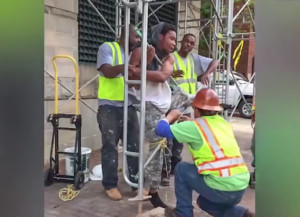 Home security draws attention—not just from flashy ads or tech gadgets. Every day, people take steps to protect their homes. Some get a dog, others install cameras, many double-check locks. Yet weak spots still get missed. The ones who notice those gaps aren’t neighbors or police—they’re seasoned thieves who know what to look for. They’ve seen the same mistakes over and over.
Home security draws attention—not just from flashy ads or tech gadgets. Every day, people take steps to protect their homes. Some get a dog, others install cameras, many double-check locks. Yet weak spots still get missed. The ones who notice those gaps aren’t neighbors or police—they’re seasoned thieves who know what to look for. They’ve seen the same mistakes over and over.
A deadbolt means little if a cracked back window stays open. Real security starts by thinking like someone trying to break in. No fear required—just awareness. The goal is to make your home look like too much trouble.
Where You Think You’re Covered But Aren’t
People often overlook areas assumed to be secure. A safe behind a picture frame or in a closet might seem smart, but those are the first places burglars check. In one break-in, a thief emptied a floor safe in under two minutes. That said, safes can still be a smart investment—especially when they’re bolted down, hidden in less obvious spots, or built into the structure of the home.
Security systems that are outdated or installed in bad spots can do more harm than good, sometimes acting as flashing signs pointing to your home’s vulnerabilities. Entry points like sliding doors or basic window locks are easy targets. When burglars spot those, your home stands out. Upgrading locks and reconsidering where valuables are kept can make a big difference.
What Your Landscaping and Architecture Reveal
Yard layout and home design send signals you might not even notice. Tall bushes, overgrown trees, and dark corners create ideal hiding spots. Poor lighting makes it easier for someone to sneak around unnoticed. In contrast, a well-lit entryway and trimmed landscaping can make a potential intruder think twice. One burglar admitted targeting a home specifically because the backyard was hidden by thick hedges and the motion lights weren’t working.
Single-story homes with easy back access often draw attention. They’re quicker to move through and have fewer physical barriers. Unlocked side gates or a lack of fencing between properties increase the risk. Using lights, fences, and clear sightlines to limit unseen movement can make a big difference in keeping the property secure.
How Daily Habits Make You Predictable
Daily habits can make a home an easy target. Leaving at the same time each morning or keeping the garage open creates a pattern anyone watching can track. In one case, a thief studied a street for three days and struck at 8:15 a.m.—the exact time the homeowners left each day. Predictability gives burglars an edge.
Other clues, like stacked packages or an overflowing mailbox, signal no one’s home. One house was hit after five Amazon boxes sat outside for two days. Small changes to your routine can reduce predictability and help keep your home off a thief’s radar.
What Intruders Notice Once Inside
If someone does get inside, the intruder scans the space quickly. Items like phones, laptops, or jewelry left near the entry are easy pickings. Most burglars don’t stick around long—once inside, the goal is to hit the areas that can be reached fast.
Even the trash can give things away. Leaving boxes for new electronics on the curb lets people know what’s inside. Keep expensive items out of plain sight and break down packaging before taking it out. These steps don’t guarantee safety, but they do make your home a less obvious target.
Why They Skip Some Homes Without Even Slowing Down
Some homes signal too much hassle. Multiple deadbolts, tall fences, and visible cameras send a clear message: breaking in won’t be easy. Most burglars want quick wins, not challenges. When effort outweighs reward, the typical response is to walk away.
In one case, a would-be intruder approached a house, noticed a second camera near the side gate, and left without touching the door. Signs of life matter too. A car in the driveway, irregular garage activity, or lights on at different times make it harder to predict when a home is empty. Add a visible camera or warning sign, and uncertainty often drives thieves away.
Most break-ins happen because the home looks like an easy opportunity. Instead of repeating common safety tips, take a moment to walk through your space with fresh eyes. What feels too predictable? What might catch a thief’s attention? Think about lighting, sightlines, and how daily habits might reveal routines. Small shifts—like adjusting package delivery times or relocating visible tech—can help reduce risk. Focus on making the house feel watched, active, and unpredictable. Thieves tend to skip anything that feels like work. You don’t need perfection—just enough friction to make someone decide it’s not worth the trouble. That alone can work.


